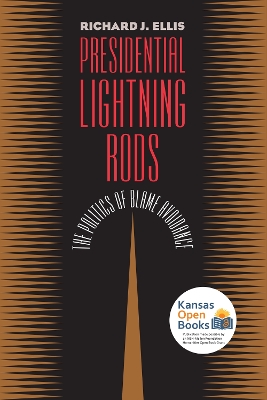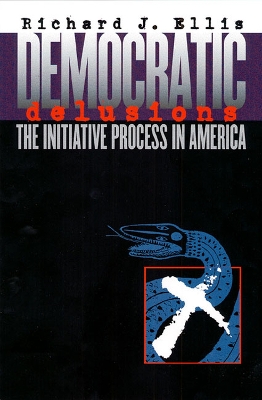Studies in Government and Public Policy
2 total works
Richard Ellis explores the widely discussed but poorly understood phenomenon of presidential lightning rods-cabinet officials who take the heat instead of their bosses. Whether by intent or circumstance, these officials divert criticism and blame away from their presidents. The phenomenon is so common that it's assumed to be an essential item in every president's managerial toolbox. But, Ellis argues, such assumptions can oversimplify our understanding of this tool.
Ellis advises against indiscriminate use of the lightning rod metaphor. Such labeling can hide as much as it reveals about presidential administration and policymaking at the cabinet level. The metaphor often misleads by suggesting strategic intent on the president's part while obscuring the calculations and objectives of presidential adversaries and the lightning rods themselves.
Ellis also illuminates the opportunities and difficulties that various presidential posts-especially secretaries of state, chiefs of staff, and vice presidents-have offered for deflecting blame from our presidents. His study offers numerous detailed and instructive examples from the administrations of Truman (Dean Acheson); Eisenhower (Richard Nixon, John Foster Dulles, Herbert Brownell, and Ezra Taft Benson); LBJ (Hubert Humphrey); Ford (Henry Kissinger); and Reagan (James Watt).
These examples, Ellis suggests, should guide our understanding of the relationship between lightning rods and presidential leadership, policymaking, and ratings. Blame avoidance, he warns, does have its limitations and may even backfire at times. Nevertheless, President Clinton and his successors may need to rely on such tools. The presidency, Ellis points out, finds itself the object of increasingly intense partisan debate and microscopic scrutiny by a wary press. Lightning rods can deflect such heat and help the president test policies, gauge public opinion, and protect his political power and public image. Ellis's book is an essential primer for helping us understand this process.
While this may appear to be democracy in action, Richard Ellis warns us that the initiative process may be putting democracy at risk. In Democratic Delusions he offers a critical analysis of the statewide initiative process in the United States, challenging readers to look beyond populist rhetoric and face political reality.
Through engaging prose and illuminating (and often amusing) anecdotes, Ellis shows readers the dark side of direct democracy--specifically the undemocratic consequences that result from relying too heavily on the initiative process. He provides historic context to the development of initiatives-from their Populist and Progress roots to their accelerated use in recent decades-and shows the differences between initiative processes in the states that use them. Most important, while acknowledging the positive contribution of initiatives, Ellis shows that there are reasons to use them carefully and sparingly: ill-considered initiatives can subvert normal legislative checks and balances, undermine the deliberative process, and even threaten the rights of minority groups through state-sanctioned measures.
Today's initiative process, Ellis warns, is dominated not by ordinary citizens but by politicians, perennial activists, wealthy interests, and well-oiled machines. Deliberately misleading language on the ballot confuses voters and influences election results. And because many initiatives are challenged in the courts, these ostensibly democratic procedures have now put legislation in the hands of the judiciary. Throughout his book he cites examples drawn from states in which initiatives are used intensively--Oregon, California, Colorado, Washington, and Arizona-as well as others in which their use has increased in recent years.
Undoing mistakes enacted by initiative can be more difficult than correcting errors of legislatures. As voters prepare to consider the host of initiatives that will be offered in the 2002 elections, this book can help put those efforts in a clearer light. Democratic Delusions urges moderation, attempting to teach citizens to be at least as skeptical of the initiative process as they are of the legislative process--and to appreciate the enduring value of the representative institutions they seek to circumvent.

